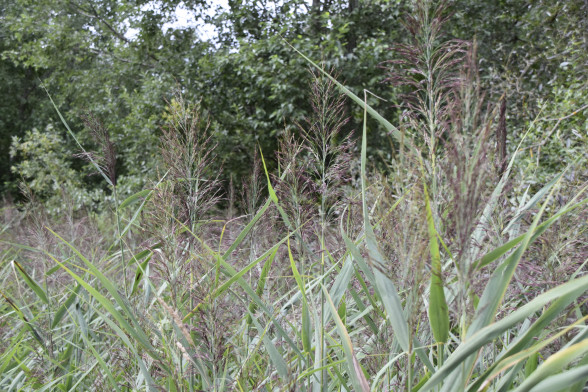
Common Reed /Phragmites australis/
Common reed is a perennial plant belonging to the grass family, Poaceae. It has a long (up to 2 m) creeping rhizome and a sturdy, hollow, cylindrical stem (up to 5 m). The flat leaves have sharp margins and are sparsely hairy on the lower surface. The plant is resilient due to its sturdy stem.
At the tip of the stem, a dense cluster, 20-50 cm in length, forms. The inflorescences can be dark violet, brown, or yellow. Common reed begins flowering in June, and blooming continues until mid-autumn.
In Latvia, this plant is found throughout the country, particularly on the shores of lakes and rivers, in lowland and transitional bogs, wet meadows, and ditches. It forms large stands and plays a significant role in water purification processes. In spring, while the stems are soft, they can be used as fodder for cattle and horses. The tough stems are used for thatching roofs, making mats, and in the production of paper and cellulose. In some regions, reed stems are used for weaving wall decorations, carpets, and blinds.
For medicinal purposes, young shoots, stems, leaves, fruits, and roots are collected. The medicinal properties of common reed are attributed to its content of vitamins and minerals. Although the plant is not fully researched, it is known to possess anti-inflammatory, antioxidant, and diuretic properties. Infusions of its roots are recommended for treating various inflammatory conditions of the urinary system.
Information sources: www.latvijasdaba.lv, Wikipedia, https://www.agfonds.lv
